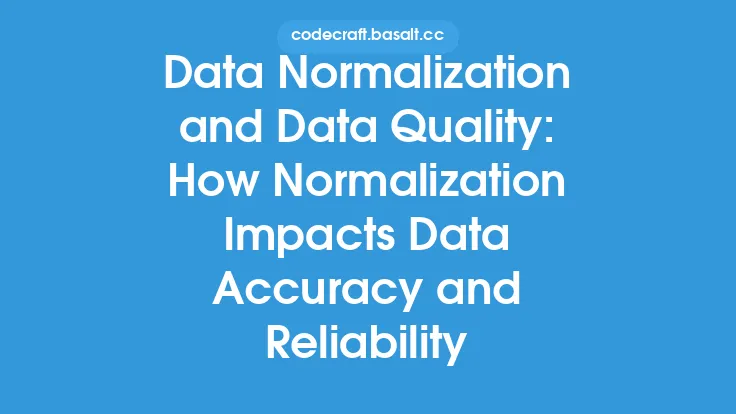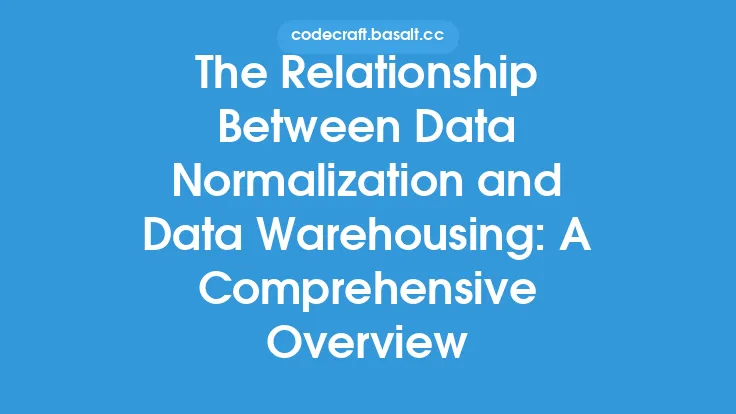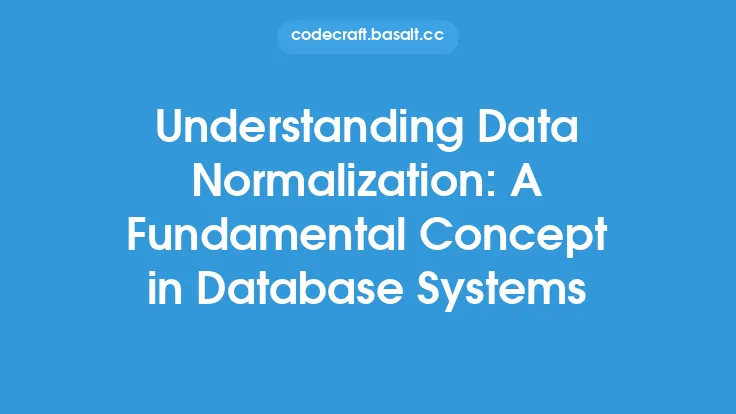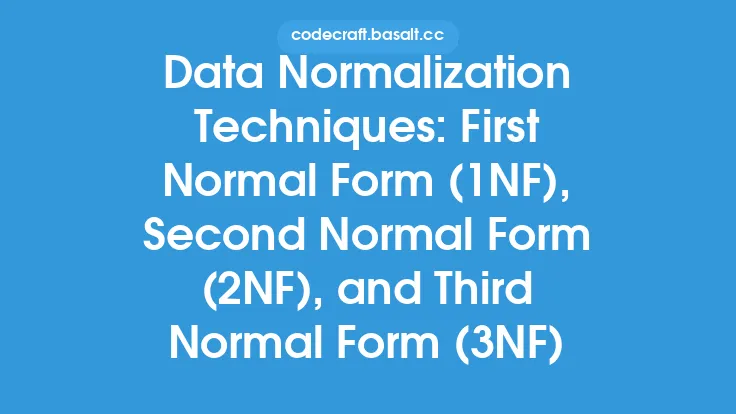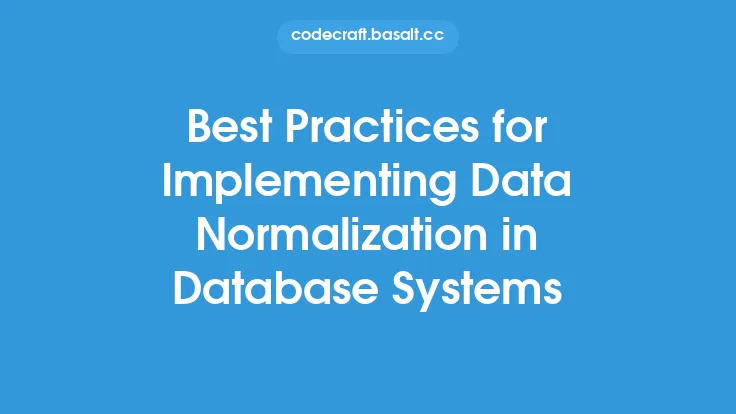Data normalization is a crucial process in database systems that ensures data consistency and reduces data redundancy. However, even with proper normalization, data anomalies can still occur, affecting the overall quality and reliability of the data. Identifying and resolving these anomalies is essential to maintain data integrity and ensure that the data is accurate and consistent. In this article, we will explore the different data normalization patterns and techniques used to identify and resolve data anomalies.
Introduction to Data Anomalies
Data anomalies refer to inconsistencies or errors in the data that can occur due to various reasons such as data entry errors, inconsistent data formatting, or lack of data validation. These anomalies can lead to incorrect results, data inconsistencies, and even data loss. Common types of data anomalies include duplicate data, inconsistent data, and missing data. Duplicate data refers to identical data records that appear multiple times in the database, while inconsistent data refers to data that is not consistent in terms of formatting or syntax. Missing data, on the other hand, refers to data that is not present or is null.
Types of Data Normalization Patterns
There are several data normalization patterns that can be used to identify and resolve data anomalies. These patterns include:
- Entity-Attribute-Value (EAV) pattern: This pattern involves storing data in a table with three columns: entity, attribute, and value. This pattern is useful for storing data that has a large number of attributes or for storing data that is sparse.
- Star and Snowflake patterns: These patterns involve storing data in a fact table surrounded by dimension tables. The star pattern is used for storing data that has a single fact table and multiple dimension tables, while the snowflake pattern is used for storing data that has multiple fact tables and dimension tables.
- Galaxy pattern: This pattern involves storing data in a fact table surrounded by multiple dimension tables, with each dimension table having its own set of related tables.
Identifying Data Anomalies
Identifying data anomalies involves analyzing the data to detect inconsistencies or errors. This can be done using various techniques such as data profiling, data quality metrics, and data validation rules. Data profiling involves analyzing the data to understand its distribution, patterns, and relationships. Data quality metrics involve measuring the quality of the data using metrics such as accuracy, completeness, and consistency. Data validation rules involve defining rules to check the data for errors or inconsistencies.
Resolving Data Anomalies
Resolving data anomalies involves correcting or removing the inconsistent or erroneous data. This can be done using various techniques such as data cleansing, data transformation, and data consolidation. Data cleansing involves removing or correcting errors in the data, while data transformation involves converting the data into a consistent format. Data consolidation involves combining multiple data sources into a single, consistent data source.
Data Normalization Techniques for Resolving Anomalies
There are several data normalization techniques that can be used to resolve data anomalies. These techniques include:
- First Normal Form (1NF): This technique involves eliminating repeating groups or arrays in the data.
- Second Normal Form (2NF): This technique involves eliminating partial dependencies in the data.
- Third Normal Form (3NF): This technique involves eliminating transitive dependencies in the data.
- Boyce-Codd Normal Form (BCNF): This technique involves eliminating transitive dependencies and ensuring that each non-key attribute depends on the entire primary key.
- Higher Normal Forms: These techniques involve eliminating more complex dependencies and ensuring that the data is fully normalized.
Best Practices for Implementing Data Normalization Patterns
Implementing data normalization patterns requires careful planning and execution. Some best practices for implementing data normalization patterns include:
- Define clear data quality metrics: Define clear metrics to measure the quality of the data and ensure that the data meets the required standards.
- Use data validation rules: Use data validation rules to check the data for errors or inconsistencies and ensure that the data is accurate and consistent.
- Use data normalization techniques: Use data normalization techniques such as 1NF, 2NF, and 3NF to eliminate dependencies and ensure that the data is fully normalized.
- Monitor and maintain data quality: Monitor and maintain data quality on an ongoing basis to ensure that the data remains accurate and consistent over time.
Tools and Technologies for Data Normalization
There are several tools and technologies available for data normalization, including:
- Database management systems: Database management systems such as MySQL, Oracle, and SQL Server provide built-in support for data normalization.
- Data integration tools: Data integration tools such as Informatica, Talend, and Microsoft SQL Server Integration Services provide support for data normalization and data quality.
- Data quality tools: Data quality tools such as Trifacta, DataCleaner, and OpenRefine provide support for data quality and data normalization.
- Big data platforms: Big data platforms such as Hadoop, Spark, and NoSQL databases provide support for data normalization and data quality in big data environments.
Conclusion
Data normalization patterns are essential for identifying and resolving data anomalies in database systems. By using data normalization techniques such as 1NF, 2NF, and 3NF, and implementing best practices such as defining clear data quality metrics and using data validation rules, organizations can ensure that their data is accurate, consistent, and reliable. Additionally, using tools and technologies such as database management systems, data integration tools, data quality tools, and big data platforms can help organizations to implement data normalization patterns and ensure high-quality data.
